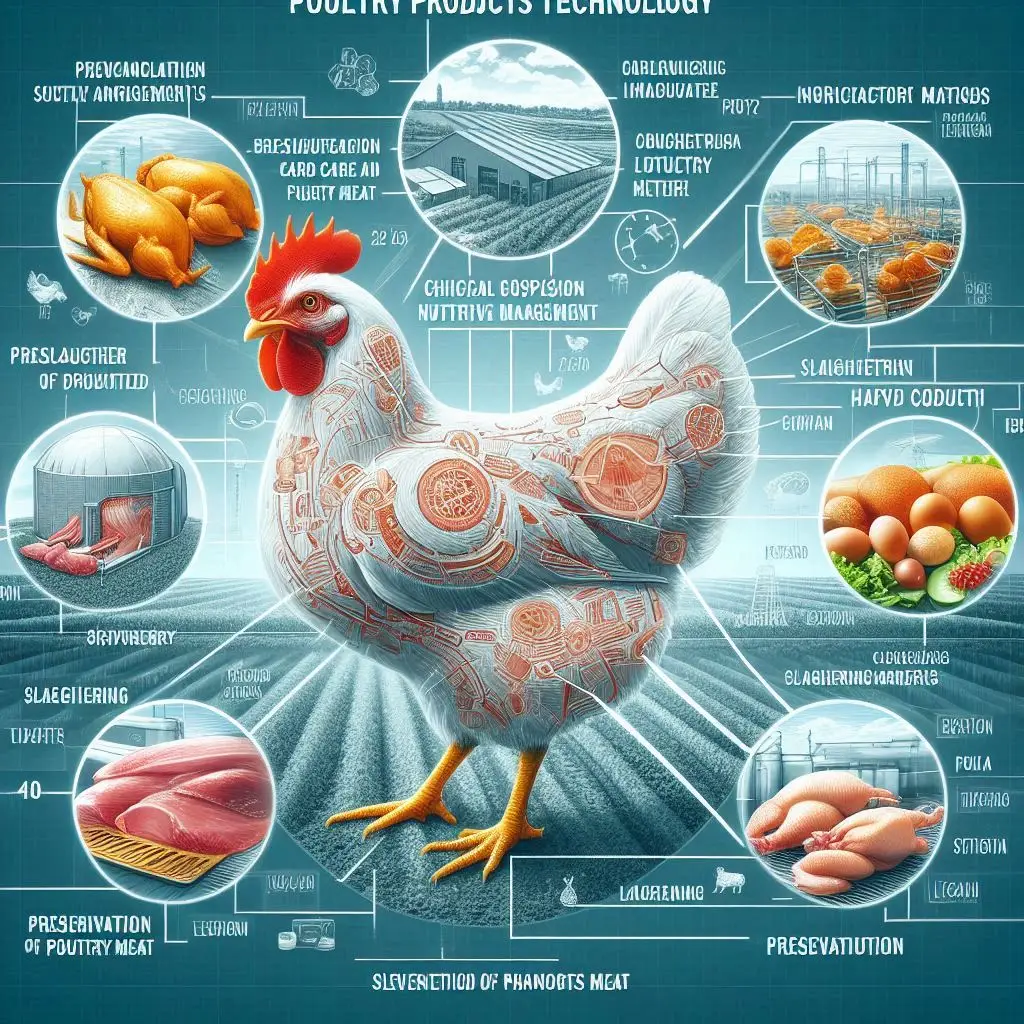Effective Methods for Preserving Poultry Meat

Introduction
Poultry meat is a popular choice in many diets around the world. However, it is highly perishable, making preservation crucial. Proper preservation techniques help maintain the quality, safety, and nutritional value of poultry products. This article explores various methods for preserving poultry meat, including chilling, freezing, curing, smoking, and canning.
Importance of Poultry Meat Preservation
Preserving poultry meat is essential for several reasons:
- Food Safety: Proper preservation prevents the growth of harmful bacteria and pathogens.
- Extended Shelf Life: Effective methods can significantly prolong the usability of poultry products.
- Nutritional Retention: Preservation techniques help maintain the nutritional quality of meat.
- Waste Reduction: By extending shelf life, preservation reduces food waste.
Methods of Preserving Poultry Meat
1. Chilling/Refrigeration
Chilling is one of the most common methods for short-term poultry preservation. This method involves storing poultry at temperatures between 0°C and 4°C.
- Benefits: Chilling slows down microbial growth and enzymatic reactions, keeping the meat fresh for about 5 to 7 days.
- Best Practices: Always chill poultry immediately after slaughter. Ensure that the refrigeration units maintain consistent temperatures to avoid spoilage.
2. Freezing
Freezing is ideal for long-term preservation of poultry meat. This method halts microbial growth and preserves nutritional value.
- Benefits: When done correctly, freezing retains most of the meat’s quality.
- Best Practices: Wrap poultry tightly in moisture-resistant packaging to prevent freezer burn. Quick freezing is preferable as it forms smaller ice crystals, maintaining the meat’s texture.
3. Curing
Curing involves the application of salt and other curing agents to poultry meat. This method decreases water activity, inhibiting microbial growth.
- Benefits: Cured meats have a unique flavor and can be stored for extended periods.
- Best Practices: Use a brine solution or rub salt directly onto the meat. Ensure the meat is stored in a cool, dry place.
4. Smoking
Smoking is an ancient preservation technique that not only adds flavor but also helps preserve meat.
- Benefits: The compounds in smoke have bacteriostatic properties, which inhibit microbial growth.
- Best Practices: Use hardwoods for smoking to enhance flavor. Ensure proper ventilation during the smoking process.
5. Canning
Canning is a method that involves sealing poultry in airtight containers and heating them to destroy microorganisms.
- Benefits: Canned poultry can last for years without refrigeration.
- Best Practices: Use a pressure canner for safety. Follow proper canning procedures to avoid contamination.
6. Dehydration
Dehydration removes moisture from poultry, preventing microbial growth.
- Benefits: Dried poultry products can be stored for months without refrigeration.
- Best Practices: Use a dehydrator or an oven set to low temperatures. Store dried products in airtight containers.
7. Irradiation
Irradiation involves exposing poultry to ionizing radiation to kill bacteria and other pathogens.
- Benefits: This method extends shelf life and ensures safety without altering the meat’s flavor significantly.
- Best Practices: Follow regulatory guidelines for irradiation to ensure safety and effectiveness.
Conclusion
Preserving poultry meat is vital for ensuring food safety and extending shelf life. By employing various methods such as chilling, freezing, curing, smoking, canning, dehydration, and irradiation, consumers can enjoy poultry products for longer periods while maintaining their quality.
For more pearls of Vets Wisdom:
https://wiseias.com/partitioning-of-food-energy-within-animals/






Responses